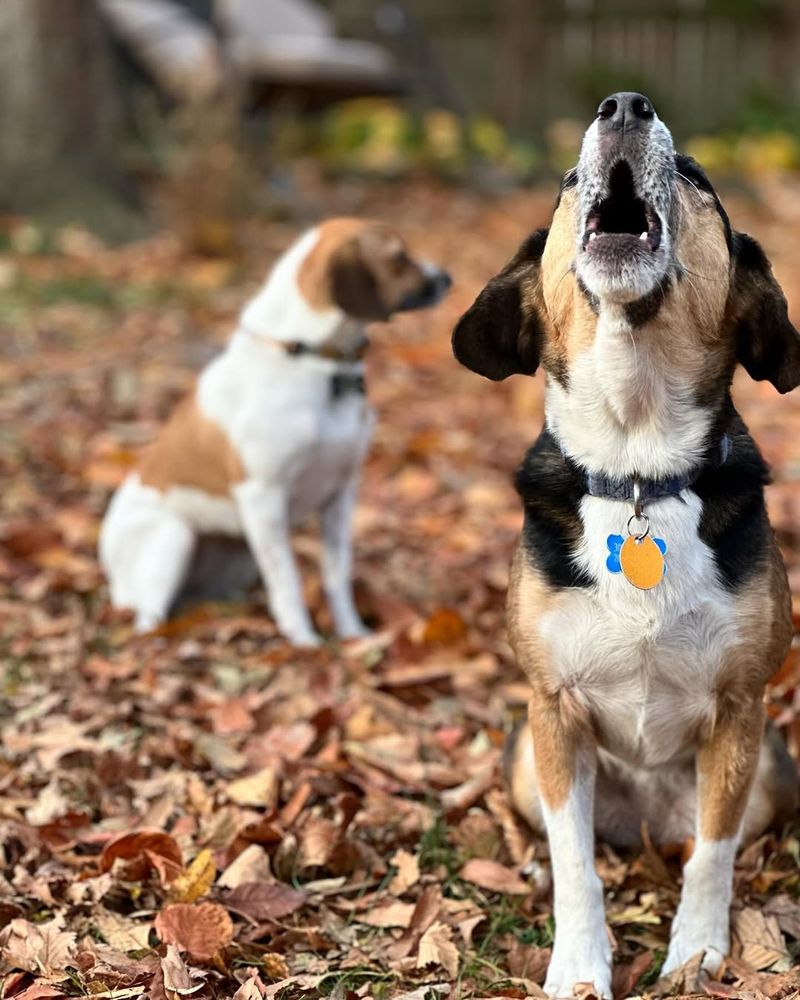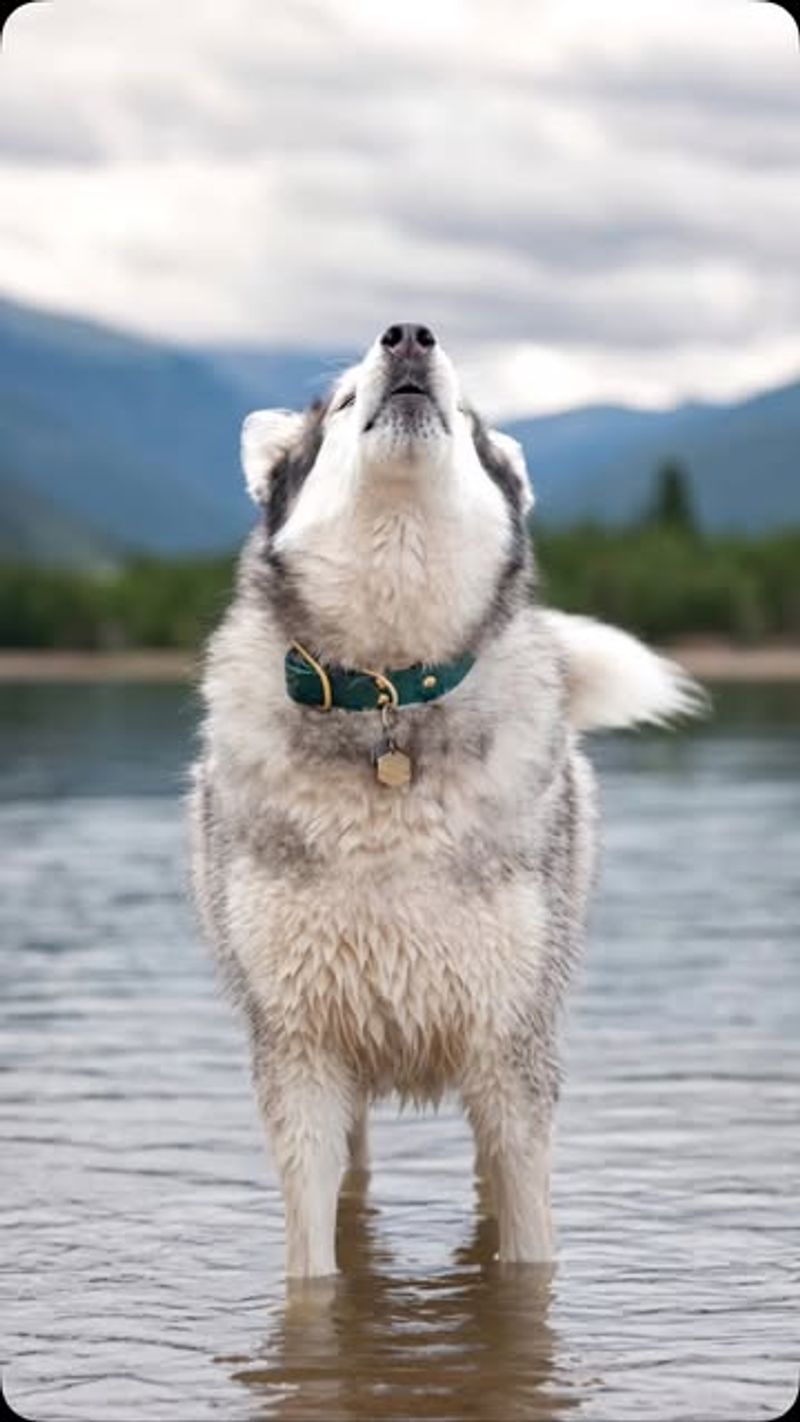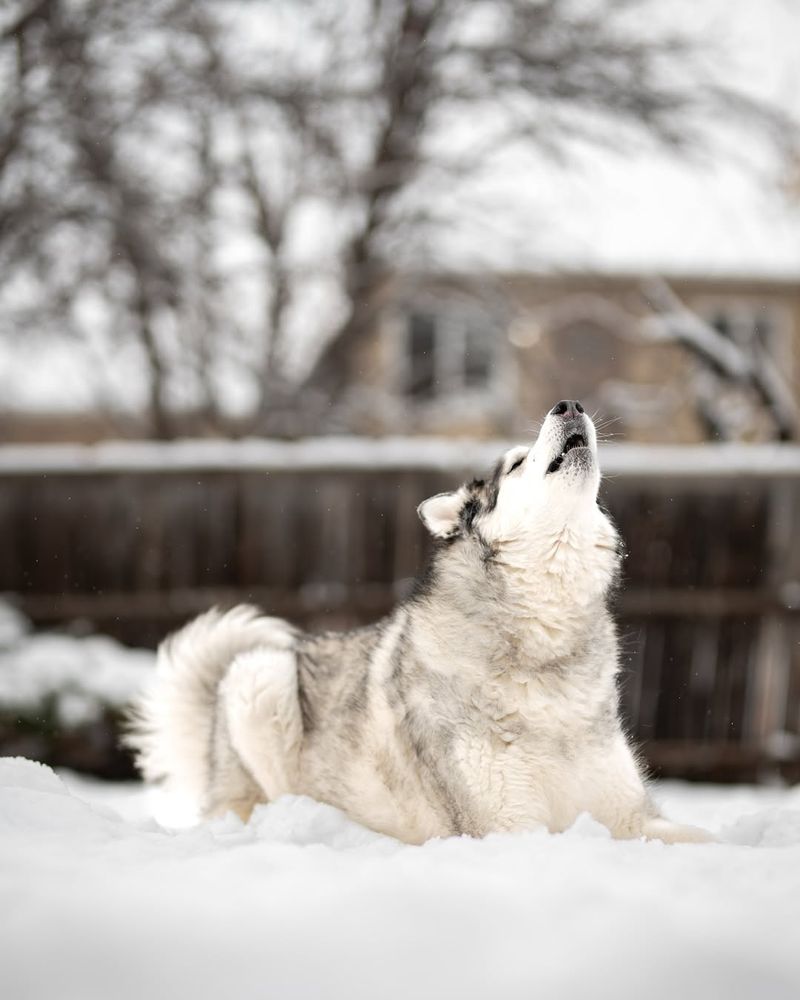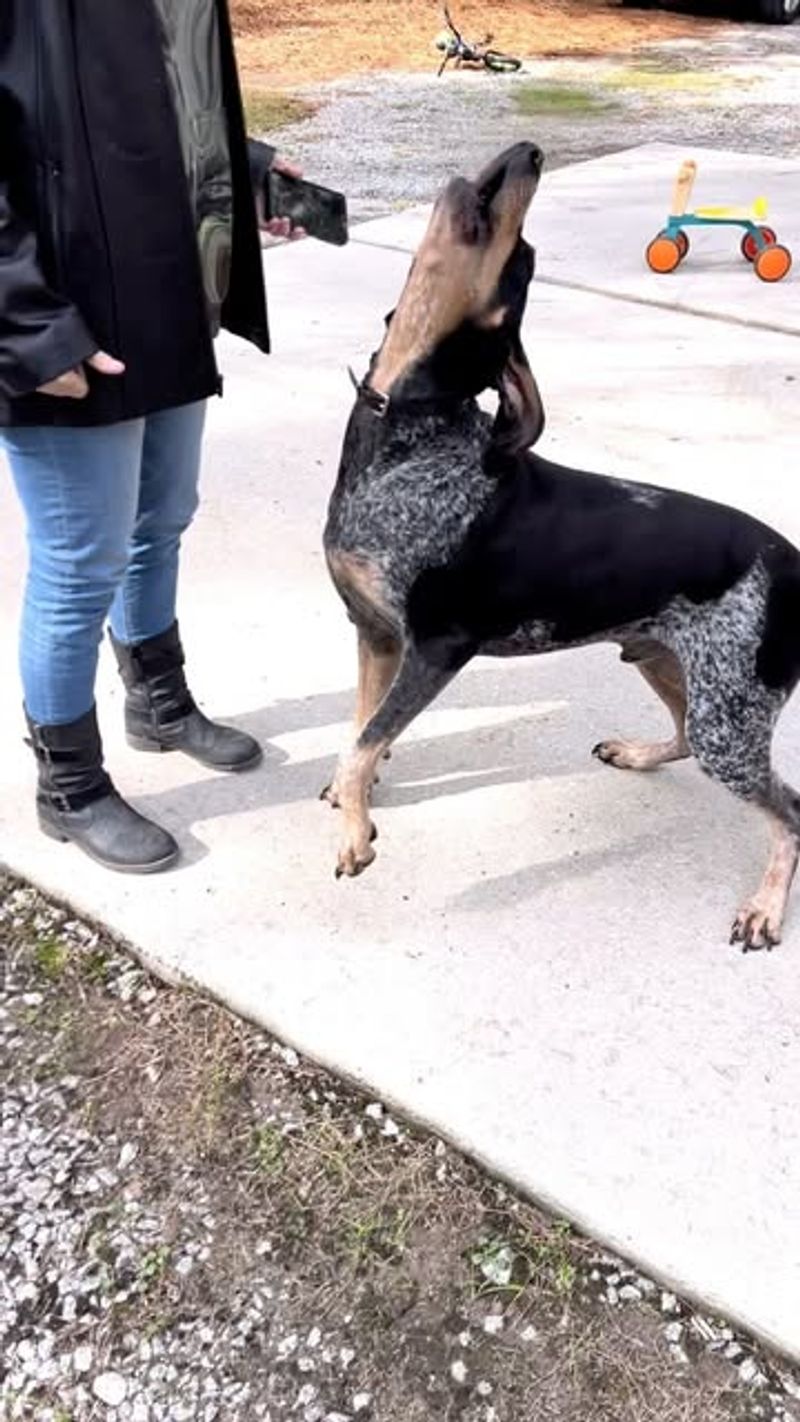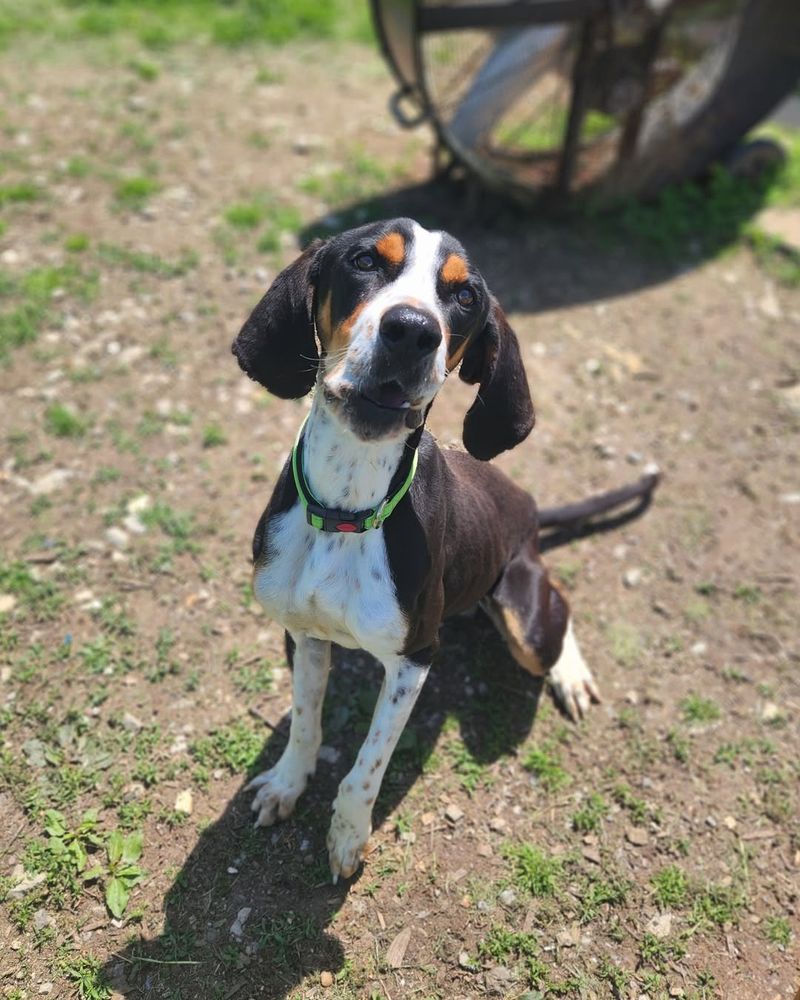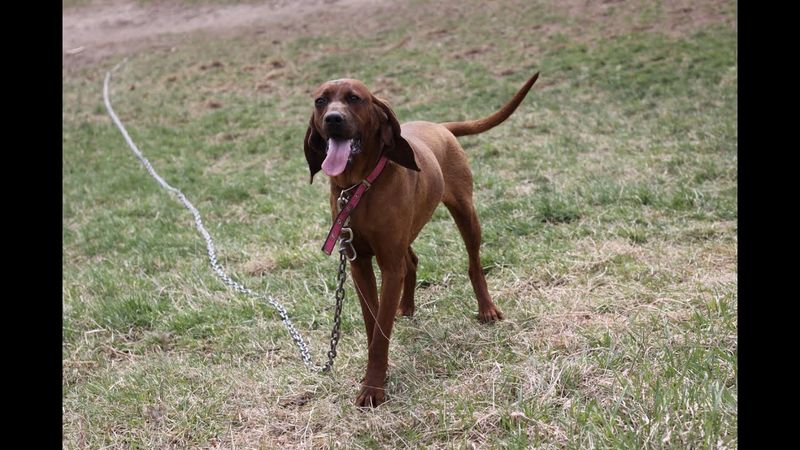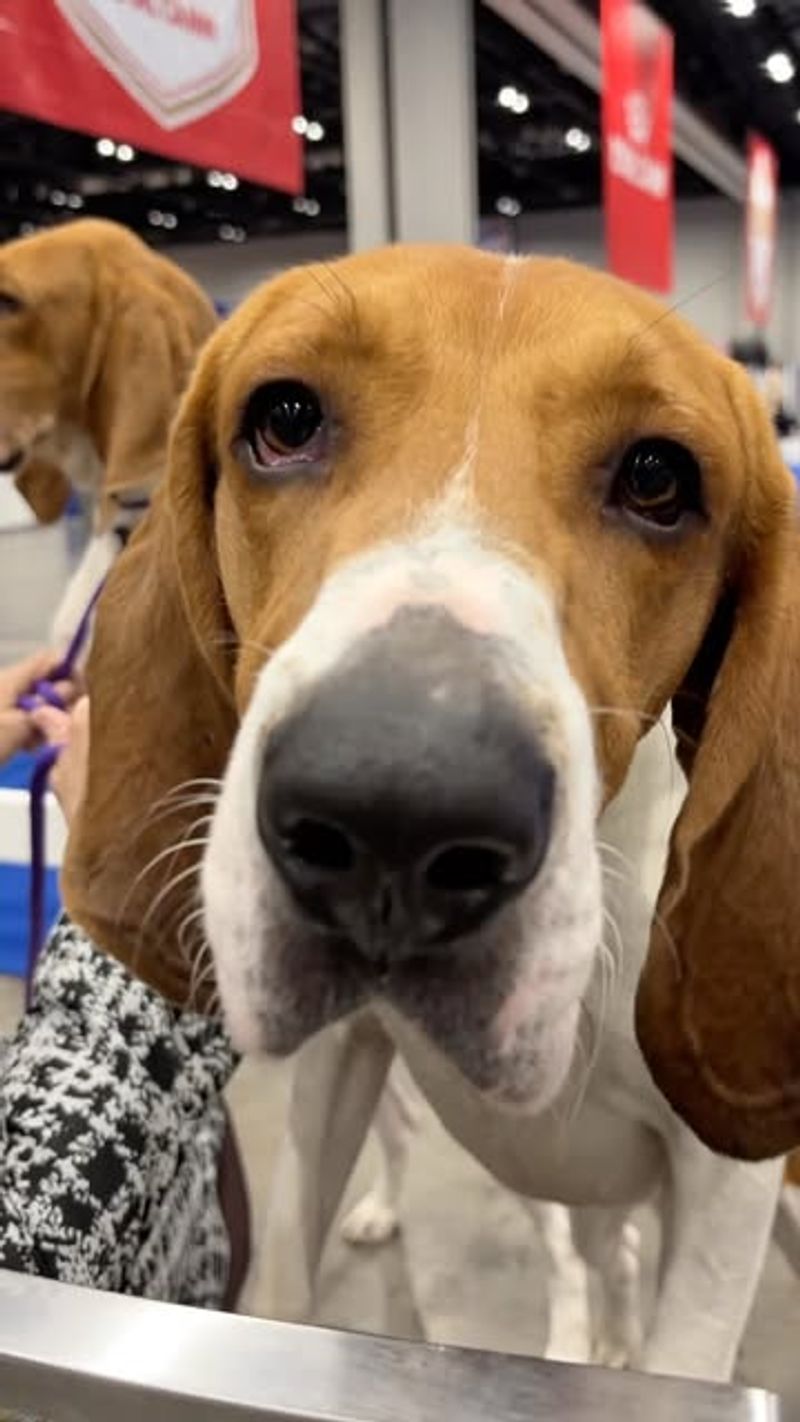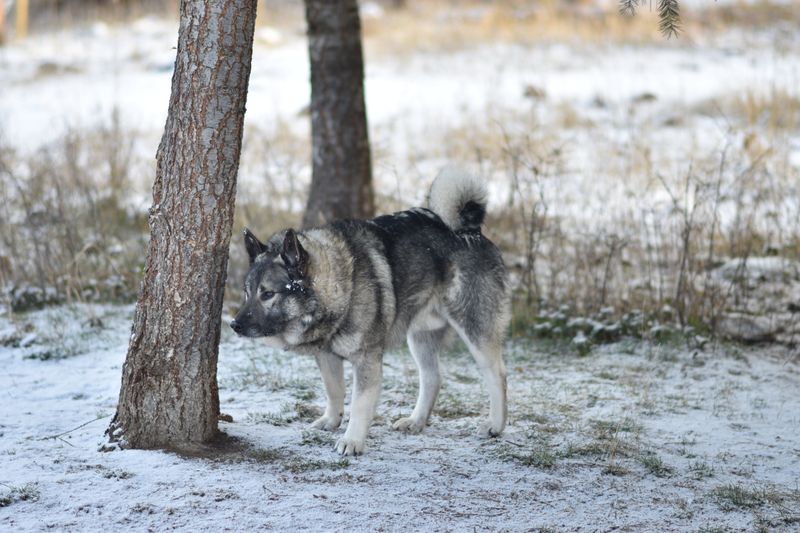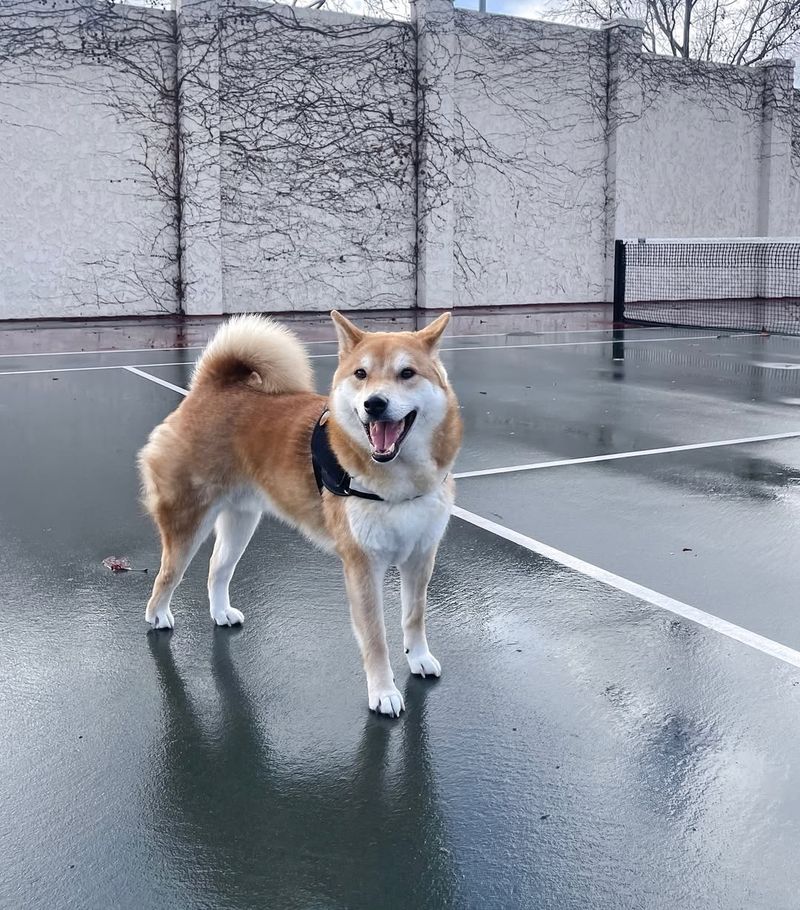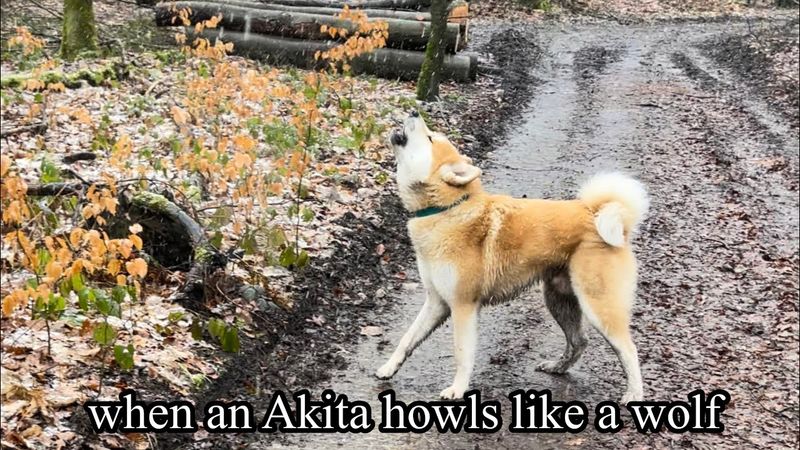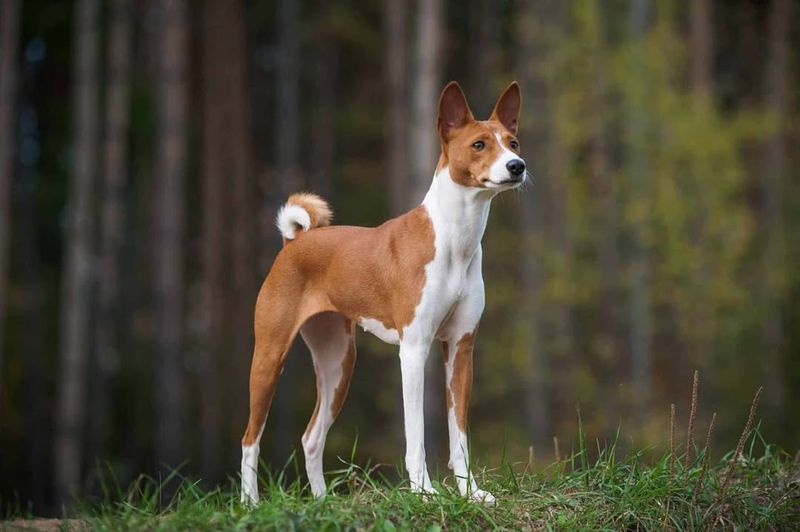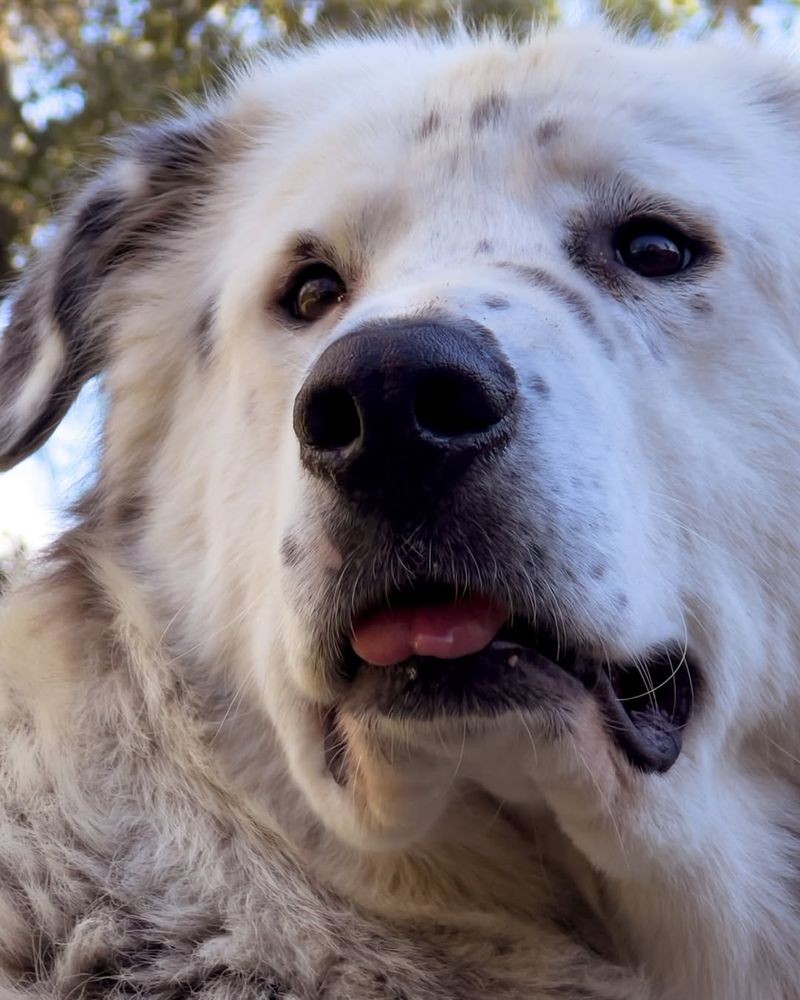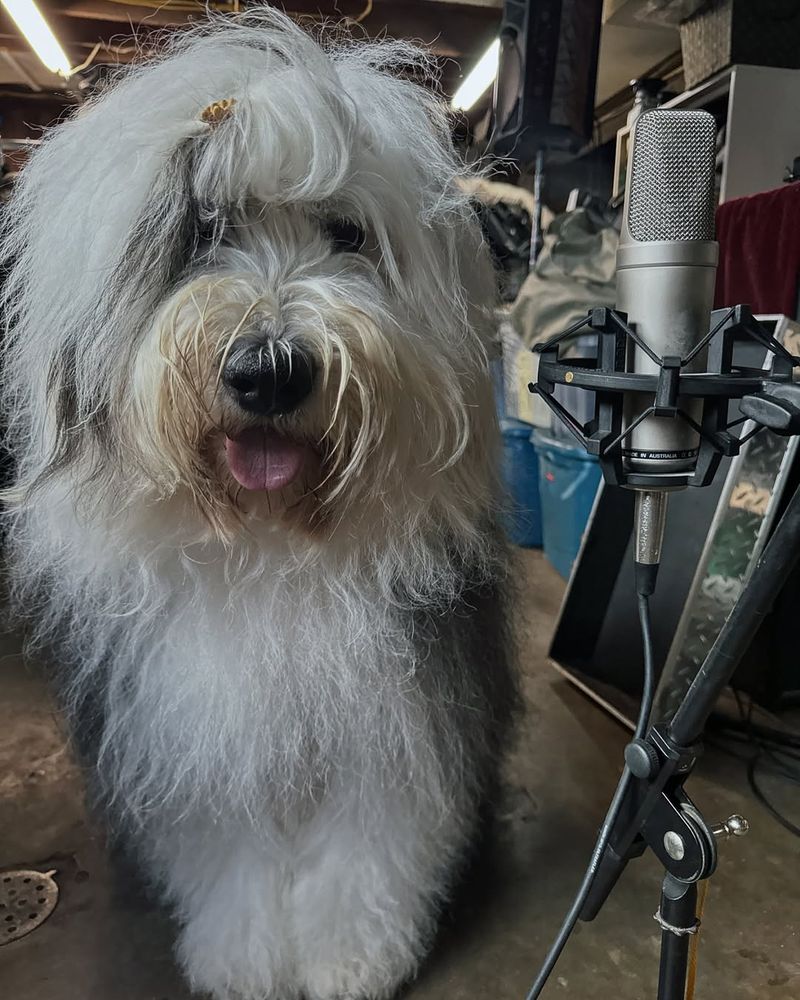Many dog breeds are renowned not just for their loyalty and companionship, but also for their distinctive howls. These howls are often a means of communication, a call to the pack, or simply an expression of joy. Let’s explore the world of these vocal canines.
Beagle
The Beagle is not just known for its adorable looks but also for its iconic howl. This small hound has a big voice that echoes through the woods. Its howl is musical, almost like a song, and serves as a way to communicate with its pack.
Beagles often howl to express excitement or to alert their owners of something unusual. This breed is particularly famous for its ability to follow scents over long distances, using its howl as a signal.
Whether on a hunt or at home, a Beagle’s howl is unmistakable and full of character.
Bloodhound
The Bloodhound is a breed renowned for its scent-tracking abilities and its deep, resonant howl. Known as the sleuth of the dog world, it uses howls to call to its companions during searches.
With a history of tracking scents that span days, Bloodhounds use their howls to communicate findings and collaborate with their human partners. This howl is often described as rich and melodious.
Although their appearance might seem solemn, a howling Bloodhound is a picture of dedication and focus, making them endearing to hunters and families alike.
Siberian Husky
Siberian Huskies, with their wolf-like appearance, are famous for their howls. These howls resonate across snowy terrains, echoing the ancient call of the wild.
Often compared to wolves, Huskies use howling as a form of communication within their pack, especially during sledding. Their howls can be heard over long distances, guiding other members of the team.
This breed’s howl is both a call to action and a bonding ritual, solidifying their role both in the wild and as beloved family pets.
Alaskan Malamute
Alaskan Malamutes are known for their strength and endurance, but their howls are equally impressive. Similar to their Husky cousins, Malamutes have a howl that is powerful and far-reaching.
Used to communicate with the pack, their howls are often louder and deeper, reflecting their robust nature. This vocalization is an integral part of their social structure, ensuring coordination during sledding expeditions.
Malamutes are less barkers and more howlers, making this sound a unique and cherished trait for those who own them.
Basset Hound
The Basset Hound’s howl is a distinctive sound that captures attention. Known for its droopy ears and solemn eyes, this breed uses its howl as a means of tracking and communication.
The sound is low and mournful, often resonating with emotion. Bassets are pack dogs, and their howls play a crucial role in maintaining contact during hunts.
Despite their serious appearance, a Basset’s howl can be surprisingly humorous, often leading to smiles and laughter from those who hear it.
Coonhound
Coonhounds are bred for hunting, and their howls are integral to their role. This breed has a distinctive howl that serves as a beacon, guiding hunters to the location of their quarry.
Their howls are loud and clear, cutting through the night air effortlessly. Each Coonhound has a unique howl, recognizable to its owner, ensuring effective communication during hunts.
Beyond their hunting prowess, Coonhounds are affectionate companions, with their howls serving as a reminder of their history and capabilities.
Dachshund
Dachshunds, though small in size, have a howl that packs a punch. Known for their bold and energetic nature, these dogs use their howls to alert and communicate.
Originally bred for hunting badgers, Dachshunds would howl to signal the location of their prey. Today, their howls are more likely to announce the arrival of a guest or to seek attention.
This breed’s vocal nature, combined with its playful demeanor, makes the Dachshund a lively and entertaining companion.
Bluetick Coonhound
The Bluetick Coonhound is famous for its distinctive howl that echoes through the woods. Known for their hunting skills, they use howls to communicate location and keep track of each other during hunts.
Their howls are musical and carry over long distances, a testament to their endurance and tenacity. Each Bluetick has a unique howl, identifiable to their owner.
Beyond hunting, their howls signify happiness and social interaction, making them cherished pets for those who appreciate a vocal companion.
American Foxhound
The American Foxhound is celebrated for its melodic howl, a sound that is both commanding and beautiful. Used in packs, their howls coordinate activities during hunts.
Their vocalizations are not just functional but also expressive, capturing a range of emotions. American Foxhounds have a history steeped in tradition and the sounds of their howls reflect this heritage.
For those who own them, this breed’s howl is a reminder of their adventurous spirit and loyalty.
Redbone Coonhound
The Redbone Coonhound is characterized by its striking red coat and distinctive howl. Known for trailing game, their howls serve as a guide for hunters.
The sound is resonant and can be heard over great distances, a feature that enhances their tracking abilities. Each Redbone’s howl is distinct, allowing owners to recognize it easily.
In a domestic setting, their howls often signal excitement or the need for interaction, making them both effective hunters and beloved family members.
Treeing Walker Coonhound
The Treeing Walker Coonhound’s howl is a key aspect of its hunting prowess. Known for their speed and chasing ability, they use howls to signal the location of treed prey.
Their howls are clear and piercing, ideal for long-distance communication. Each hound’s howl is unique, serving as a vocal fingerprint in the woods.
While they are exceptional hunters, they also make affectionate pets, using their howls to express joy and camaraderie with their human families.
Keeshond
The Keeshond is a breed known for its lively nature and vocal expressions. Their howls convey excitement and are often used to communicate with their human companions.
With a history as a watchdog on Dutch vessels, their howls were essential for alerting crew members. Today, they use their voices to express a range of emotions, from joy to alertness.
The Keeshond’s howl is a blend of melody and volume, making it a distinctive feature of this affectionate and spirited breed.
Norwegian Elkhound
The Norwegian Elkhound is a robust and sturdy breed with a howl that reflects its Viking heritage. Known for hunting large game, their howls coordinate pack activities.
Their howls are deep and resonant, echoing across the rugged terrains they were bred to traverse. This vocalization is key to their hunting success and social structure.
In a family setting, their howls add charm and character, creating a bond of communication with their human companions.
Tibetan Mastiff
The Tibetan Mastiff is a breed shrouded in mystique, and its howl is as powerful as its presence. Used as a guardian of herds and villages, their howls were crucial for alerting owners of intruders.
Their howls are deep and authoritative, often carrying an air of ancient wisdom. These vocalizations are more than just sounds; they are a testament to their protective instincts.
Today, their howls are a reminder of their guardian role and serve as a unique feature that endears them to families worldwide.
Shiba Inu
The Shiba Inu, Japan’s national treasure, is not only adored for its fox-like looks but also for its distinct howl. Though more inclined to bark, Shibas do produce howls, often to express emotions.
Their howl is high-pitched and somewhat yodel-like, reflecting their spirited nature. It’s a sound that can express a range of feelings, from excitement to concern.
These vocalizations add to the Shiba’s charm, making them a favorite among dog enthusiasts who appreciate a breed with personality and vocal variety.
Akita Inu
The Akita Inu is a breed that embodies strength and loyalty, and its howl is equally commanding. Known for their protective nature, Akitas use howls to communicate with their family.
Their howls are deep and resonate with authority, serving as both a call to action and a means of expressing contentment. This breed’s vocalizations are rare but memorable, adding to their dignified presence.
An Akita’s howl is a sound of assurance, echoing their role as steadfast guardians and cherished companions.
Basset Fauve de Bretagne
The Basset Fauve de Bretagne, with its rustic appearance, is known for its enthusiastic howl. This small hunting breed uses its howl to communicate during hunts and express emotions.
Despite their size, their howls are full-bodied and vibrant, resonating with a sense of determination. These vocalizations help in maintaining contact with owners and other dogs during hunts.
At home, their howls are a joyful expression of their cheerful nature, making them a wonderful addition to families seeking a vocal pet.
Finnish Spitz
The Finnish Spitz, known as the “Barking Bird Dog,” also has a distinct howl that is part of its vocal repertoire. Known for hunting, their howls help signal the presence of game.
These howls are sharp and carry far, ensuring effective communication over distances. The Finnish Spitz’s howl is an integral part of its hunting strategy, reflecting their intelligence and agility.
For owners, these howls are a charming aspect of their personality, adding a layer of communication and interaction with this lively breed.
Irish Wolfhound
The Irish Wolfhound, one of the largest breeds, is known for its gentle nature and deep howl. Their howls serve as a majestic call, echoing across the moors and fields.
Historically used for hunting wolves, their howls were essential for communication during hunts. Today, their howls are a reminder of their ancient lineage and grace.
These vocalizations are soft yet powerful, adding to the breed’s noble appearance and making them cherished companions for those who appreciate history and grandeur.
Chihuahua
The Chihuahua may be tiny, but its howl is full of personality. Known for their feisty nature, these dogs use howls to express a range of emotions, from excitement to demand for attention.
Their high-pitched howls are sharp and carry a surprising amount of volume, given their size. Chihuahuas use these vocalizations to communicate with their owners and other pets.
Despite their diminutive stature, their howls are a big part of their charm, making them lively companions who are not afraid to use their voice.
Basenji
The Basenji, often referred to as the “barkless dog,” is famous for its unique howl, often described as a yodel. This distinctive sound is a part of their communication style.
Known for their independence and intelligence, Basenjis use these yodel-like howls to express themselves, whether it’s to greet their owners or alert them to something unusual.
Their vocalizations add to their mysterious appeal, making them intriguing companions for those who appreciate a dog with a unique voice and personality.
Newfoundland
The Newfoundland, a gentle giant, is known for its deep, resonant howl. These howls, often used in communication, reflect their history as working dogs alongside fishermen.
Their vocalizations are calm and measured, echoing their serene demeanor. Newfoundlands use their howls to alert, communicate, and express contentment with their families.
In a domestic setting, their howls are a comforting sound, a reminder of their role as protective and loving companions.
Great Pyrenees
The Great Pyrenees is a breed renowned for guarding livestock, and its howl is an echo of its protective instincts. These howls are deep and resonate across the expanse of their territory.
Used to communicate with their flock and human counterparts, their howls are both a warning and a means of expression.
For families, their howls are a symbol of security and devotion, embodying the Great Pyrenees’ role as a guardian and beloved family member.
Old English Sheepdog
The Old English Sheepdog is known for its shaggy coat and amiable nature, but its howls are also a charming feature. These howls are expressive and often used to communicate with their human pack.
Their vocalizations are warm and full, capturing the breed’s friendly and sociable personality. In a pastoral setting, their howls serve as a connection to their herding roots.
With their characteristic howls, Old English Sheepdogs are a joyful addition to families, bringing warmth and companionship through their vocal expressions.

